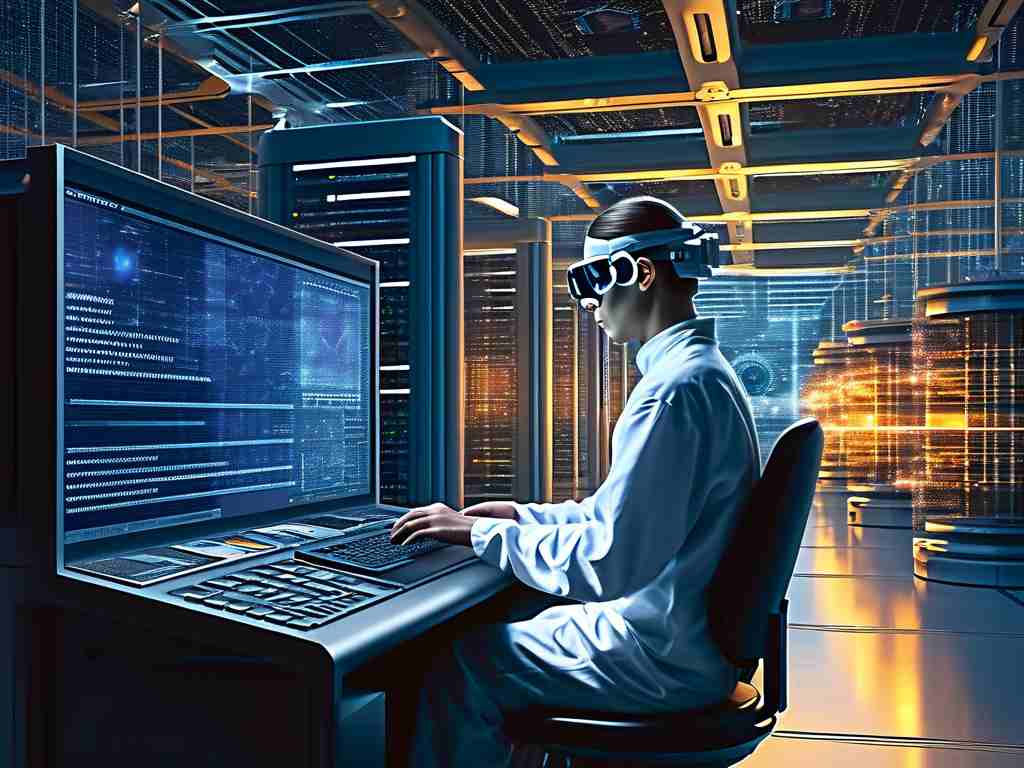The rapid advancement of information technology (IT) over the past century has reshaped nearly every aspect of human life, from communication to healthcare. Yet, as classical computing approaches its physical limits, a new frontier is emerging at the crossroads of IT and quantum mechanics—a field poised to redefine the boundaries of computation, encryption, and data processing. This article delves into the profound relationship between these two domains, examining how quantum principles are revolutionizing technology and what this synergy means for the future.
The Foundation: Quantum Mechanics Meets Information Theory
Quantum mechanics, the science governing particles at the subatomic level, introduced concepts that defy classical intuition: superposition, entanglement, and uncertainty. These principles remained largely theoretical until the late 20th century, when physicists like Richard Feynman and David Deutsch proposed that quantum systems could solve problems intractable for classical computers. This idea laid the groundwork for quantum computing, a field that merges quantum mechanics with information theory.
In classical IT, data is processed as binary bits (0s and 1s). Quantum computing, however, uses qubits, which exploit superposition to exist in multiple states simultaneously. A qubit can be 0, 1, or both at once, enabling parallel computation. For example, Google’s 2019 demonstration of “quantum supremacy” showed a quantum computer solving a problem in 200 seconds that would take a supercomputer 10,000 years. This leap stems from quantum mechanics’ ability to handle exponential complexity with linear resource growth.

Quantum Encryption: Redefining Security
Cybersecurity, a cornerstone of modern IT, faces existential threats from quantum computing. Classical encryption methods, such as RSA, rely on the difficulty of factoring large numbers—a task quantum algorithms like Shor’s can perform efficiently. This vulnerability has spurred the development of quantum-resistant cryptography and quantum key distribution (QKD).
QKD uses quantum entanglement to create unhackable communication channels. Any attempt to intercept entangled particles alters their state, alerting users to eavesdropping. China’s Micius satellite, launched in 2016, demonstrated this by achieving secure quantum communication over 1,200 kilometers. Such advancements highlight how quantum mechanics isn’t just disrupting IT but also fortifying it against future threats.
Challenges in Bridging the Two Worlds
Despite its promise, integrating quantum mechanics into IT faces significant hurdles. Decoherence—the loss of quantum states due to environmental interference—remains a major obstacle. Qubits require extreme isolation near absolute zero temperatures, making practical quantum computers expensive and complex. Companies like IBM and Rigetti are tackling this with error-correction algorithms and hybrid systems that blend classical and quantum processing.
Another challenge is scalability. Current quantum computers, like IBM’s 433-qubit Osprey, are still in the “noisy intermediate-scale quantum” (NISQ) era. Achieving fault-tolerant, large-scale quantum systems demands breakthroughs in materials science and engineering.
Beyond Computing: Quantum Sensors and AI
The IT-quantum relationship extends beyond computing. Quantum sensors, leveraging entanglement and superposition, offer unprecedented precision in measuring time, gravity, and magnetic fields. These devices could revolutionize GPS-free navigation, medical imaging, and even early earthquake detection.
In artificial intelligence (AI), quantum machine learning algorithms promise to accelerate pattern recognition and optimization. For instance, quantum neural networks could analyze vast datasets exponentially faster than classical systems, unlocking new possibilities in drug discovery and climate modeling.
The Future: A Symbiotic Evolution
The fusion of IT and quantum mechanics is not a one-way street. Just as quantum principles enhance technology, IT advancements enable deeper exploration of quantum phenomena. High-performance classical computers simulate quantum systems to test theories, while cloud platforms like AWS Braket democratize access to quantum hardware.
Looking ahead, the convergence could birth technologies we can scarcely imagine today. “Quantum internet” networks may enable instant global communication, while quantum annealers could solve optimization problems in logistics and finance. Meanwhile, quantum-inspired algorithms are already improving classical IT systems, proving that this relationship is mutually transformative.
The interplay between information technology and quantum mechanics represents one of the most exciting scientific endeavors of our time. From unbreakable encryption to computers that harness the fabric of reality, this synergy challenges our understanding of both fields. As researchers overcome technical barriers, the line between the quantum and digital worlds will blur, ushering in an era where the once-theoretical becomes foundational to progress. In this quantum leap, humanity stands on the brink of a revolution—one bit, or qubit, at a time.










